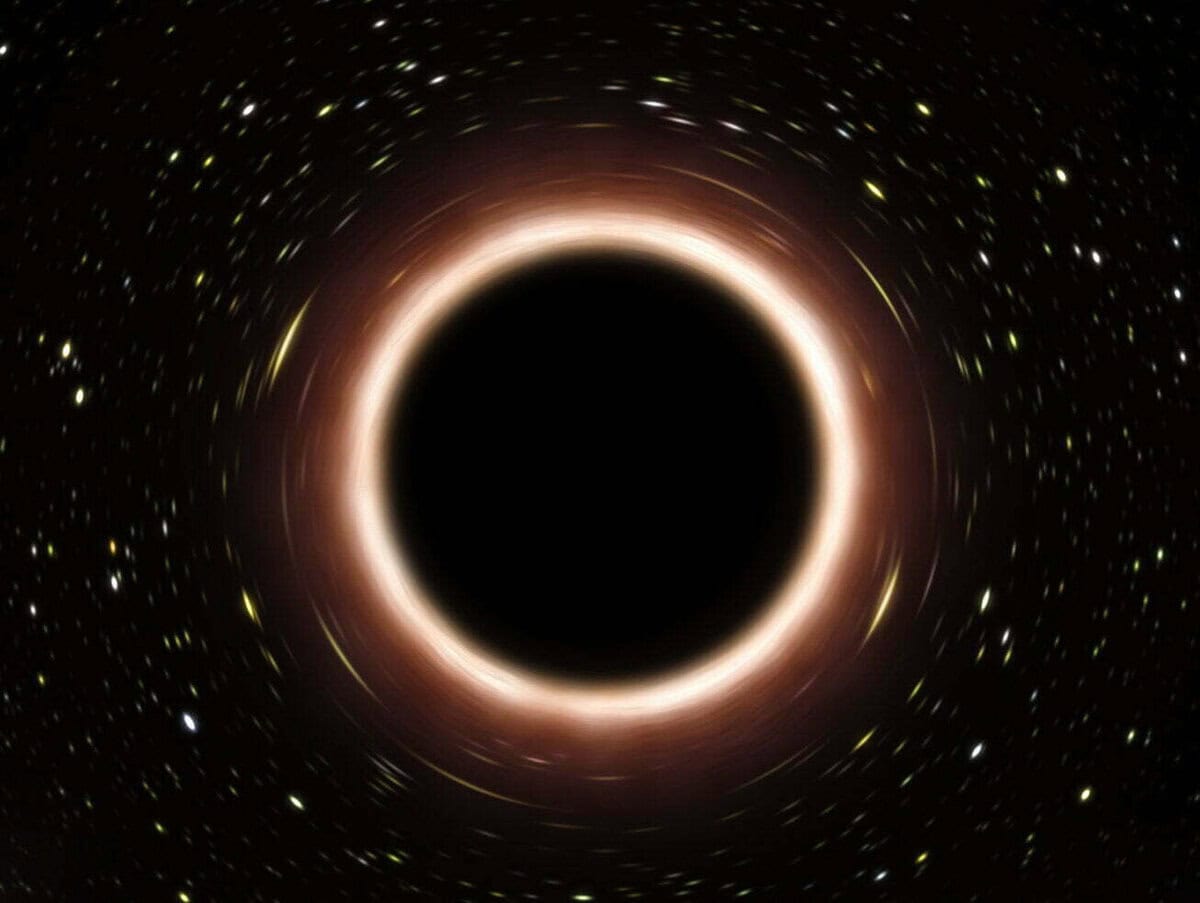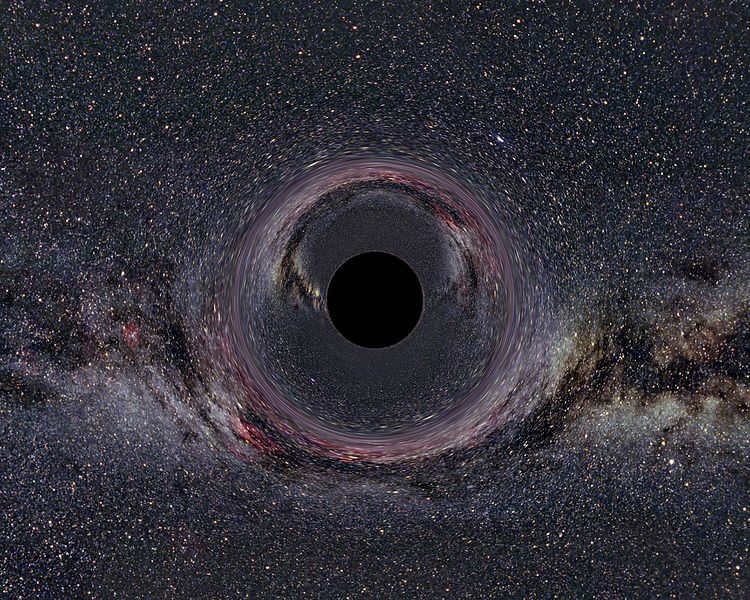An explanation of black holes in simple terms. Different types of black holes.

Explaining Black Holes in Layman’s Terms. A Simplified Explanation of Black Holes
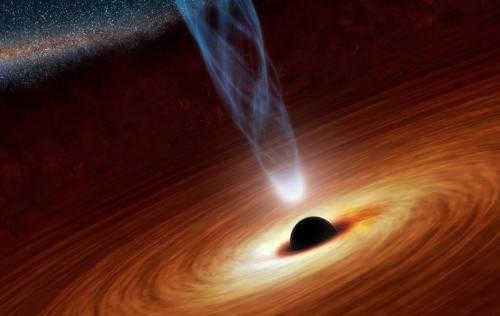
Explaining a Black Hole: A Simple Explanation of this Mysterious Phenomenon (1 Photo)
A black hole is an enigmatic occurrence in the vast expanse of the universe. Its elusive nature makes it nearly impossible to detect visually, as it emits no light, rendering it virtually invisible. In simple terms, a black hole can be likened to a rupture in space itself. Its immense gravitational force warps the fabric of space to such an extent that it forms a void from which nothing can escape once it crosses the event horizon. Even beams of light are powerless against its gravitational pull.
Active black holes absorb matter from their surroundings and increase in mass, expanding their sphere of influence and attracting new matter.
However, there also exist “dormant” black holes that exist but are unable to accrete matter. These black holes can be awakened by certain events and resume their activity.
Black holes play a crucial role in the structure of the universe. Without them, the universe would look vastly different, and galaxies may not have formed at all. Scientists are currently studying the impact of black holes on galaxy formation.
A black hole is an incredibly dense object that emits no light. Due to its immense gravitational force, passing light rays are deflected from their original path. The degree of deflection depends on the proximity of the light ray to the black hole, resulting in various effects.
To locate a black hole, scientists observe the phenomenon of gravitational lensing, which occurs when light rays pass through a black hole’s gravitational field. If a black hole is situated between us and a distant galaxy, the light from that galaxy will appear bent due to the gravitational influence of the black hole.
This deflection of light rays is known as gravitational lensing and also occurs when large masses, such as galaxies or galaxy clusters, distort the light from objects behind them. In some cases, a galaxy may appear multiple times, forming a ring around the black hole. These rings are visible in images captured by the Hubble Space Telescope, providing evidence of the presence of a black hole.
However, the image of the galaxy or star is displaced, appearing slightly offset from its actual location.
When light rays from a distant star pass through a black hole’s gravitational field, they deviate from their original trajectory. As a result, an observer on Earth perceives the star to be in a different position than its actual location, sometimes appearing multiple times or even more displaced!
If a black hole was once part of a binary star system, where one star collapsed into a black hole, it is possible to observe the black hole accreting matter from its remaining companion star. This process forms an accretion disk around the black hole, where the “stolen” matter spirals and gradually falls into the black hole.
Black holes can form through various mechanisms, including the explosion of a massive star in a supernova event. During a supernova, the outer layers of the star are expelled, while the core collapses to an extremely dense state, resulting in a black hole that traps all light.
If our Sun were to undergo a supernova, it would shrink to a diameter of only 3 km!
Another way black holes can form is through the collision and merging of two stars. When the combined mass exceeds a certain threshold, the resulting object collapses into a black hole.
Supermassive black holes, millions or even billions of times the mass of our Sun, are found at the centers of most galaxies. The exact formation mechanism of these supermassive black holes is still unknown and subject to ongoing research. It is speculated that they may form through the merger of smaller black holes or through the continuous accretion of matter from their surroundings. The presence of a black hole is believed to play a significant role in the formation and evolution of large galaxies.
In laboratories, scientists are attempting to create miniature black holes. However, the existence of tiny black holes in the universe remains uncertain and difficult to confirm. Who knows, there may be a black hole hidden within a washing machine, swallowing objects that go missing!
Primordial black holes are theoretical objects that may have formed shortly after the Big Bang when matter was highly concentrated. In certain regions of extreme density, it is speculated that black holes could have originated.
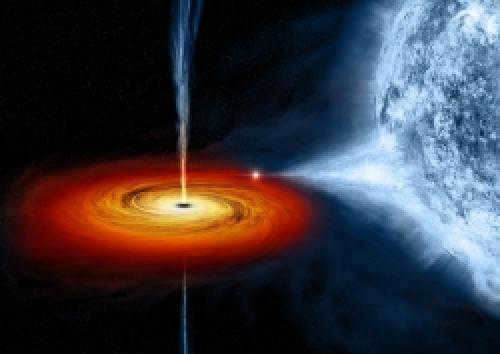
Mysterious and enigmatic celestial objects known as black holes have captivated the scientific community for decades. These cosmic phenomena, predicted by Einstein’s equations in 1915, have been the subject of numerous observations and studies. Today, it is widely accepted that black holes exist in the universe, with estimates suggesting there may be more than a million of them.
What exactly are black holes?
Black holes, also referred to as “collapsed stars” or “frozen stars” in the past, are regions of space and time characterized by such immense gravity that even light cannot escape their grasp. These gravitational powerhouses continue to pose many unanswered questions and are the subject of ongoing research and exploration.
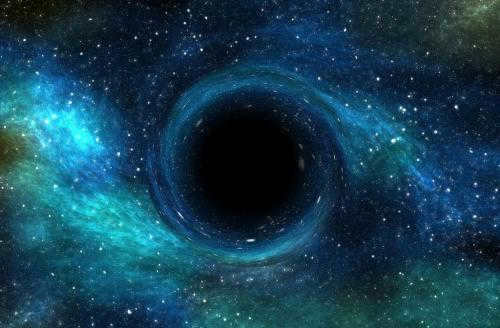
What Causes the Formation of Black Holes?
Multiple hypotheses exist regarding the origin of black holes, with some being hypothetical and others more realistic. The most widely accepted and straightforward realistic theory is the gravitational collapse of massive stars.
When a star that is large enough reaches the end of its life, it expands in size and becomes unstable, using up its last fuel. During this process, the star’s mass remains the same, but its size decreases as it undergoes a phenomenon called compaction. In other words, the dense core of the star collapses inward. This compaction causes a significant rise in temperature inside the star, and the outer layers of the star break away, forming new stars. At the same time, the core of the star collapses towards its own center. The gravitational forces are so strong that they cause the center to collapse into a single point, creating a black hole. Once formed, a black hole distorts space and time to such an extent that not even light can escape from it.
At the heart of every galaxy lies an immense black hole. As per Einstein’s theory of relativity:
“The presence of any object with mass causes a distortion in the fabric of space and time.”
Now try to imagine the extent to which a black hole distorts both time and space, considering its massive size squeezed into an incredibly tiny volume. This remarkable ability gives rise to the following peculiarity:
“Black holes possess the power to essentially halt time and compress space, rendering them invisible to our perception due to this extreme distortion.”
How do scientists detect the existence of black holes if they are invisible?
While black holes themselves may be invisible, their presence can be inferred through the matter that falls into them. As matter is drawn towards a black hole, it heats up and begins to emit light, making the black hole visible. This glowing effect allows astronomers and astrophysicists to identify the presence of black holes, even though they cannot be directly seen. By studying this faint glow, scientists have been able to identify approximately 1000 objects that exhibit similar behavior to black holes in the center of galaxies.
Impact of Black Holes on Galaxies
The influence of black holes on galaxies is a topic that fascinates scientists globally. A prevailing hypothesis suggests that the black holes situated at the core of galaxies play a crucial role in shaping their form and development. Moreover, when two galaxies collide, the merging of black holes generates an immense release of energy and matter, leading to the birth of new stars.
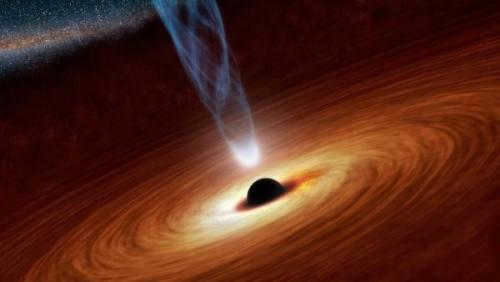
Categories of black holes
- According to the current theory, there are three categories of black holes: stellar, supermassive, and miniature. Each of these categories forms in a unique manner.
- – Stellar-mass black holes are created when a star expands to a massive size and then collapses.
– Supermassive black holes, which can have masses equivalent to millions of suns, are believed to exist at the centers of most galaxies, including our Milky Way. Scientists have various hypotheses for how supermassive black holes form. Currently, the only known fact is that supermassive black holes are a result of galaxy formation. Supermassive black holes differ from regular black holes in that they are incredibly large in size but surprisingly low in density. - No one has yet managed to detect a black hole that is smaller in mass than the Sun. It is possible that miniature black holes could have formed shortly after the Big Bang, which marks the beginning of our universe approximately 13.7 billion years ago.
- More recently, a new concept known as “white black holes” has been proposed. These hypothetical black holes are essentially the opposite of regular black holes. The existence of white holes has been actively explored by the renowned physicist Stephen Hawking.
- Quantum black holes, for now, exist only in theory. These black holes could potentially be created when subatomic particles collide during a nuclear reaction.
- Primary black holes are also a theoretical concept. They are believed to have formed shortly after the universe itself came into existence.
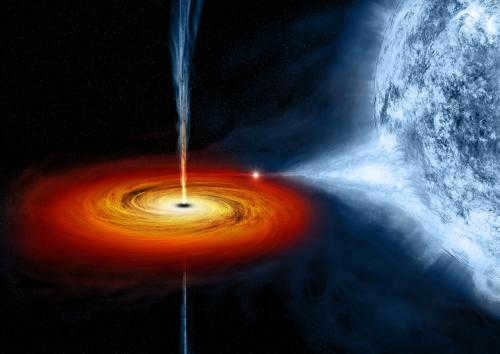
There are still many unanswered questions that future generations will have to address. For instance, the existence of so-called “wormholes,” which could potentially allow for space and time travel, remains uncertain. The inner workings of a black hole and the laws governing these phenomena are also enigmatic. Additionally, the issue of information loss within a black hole raises further inquiries.
What is a Black Hole? A Video Explanation
The Structure of Black Holes
Have you ever witnessed a floor undergoing the process of vacuuming? If you have, have you ever taken note of how the vacuum cleaner effectively draws in dust and tiny fragments such as scraps of paper? Undoubtedly, you have. Black holes operate in a similar manner to a vacuum cleaner, although instead of dust, they have a preference for absorbing larger entities: stars and planets. Nevertheless, they also do not reject cosmic dust.
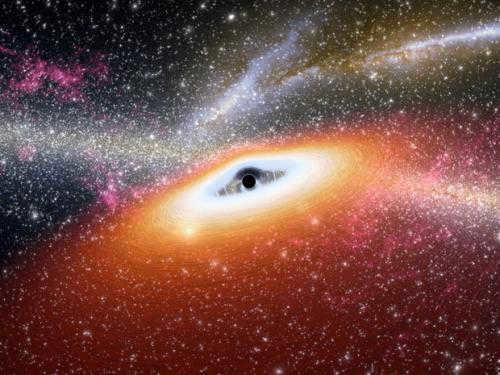
What is the process of black hole formation?
To comprehend the origin of black holes, it would be beneficial to understand the concept of light pressure. It has been discovered that light exerts pressure on objects when it falls upon them. For instance, if we illuminate a lamp in a dimly lit room, an additional force known as light pressure will act upon all objects that are illuminated. Although this force is minuscule and imperceptible in our daily lives, it exists nonetheless. The reason for its imperceptibility lies in the fact that the light emitted by a light bulb is relatively weak. (In controlled laboratory settings, it is possible to measure the light pressure of a light bulb, and it was first accomplished by the Russian physicist P. N. Lebedev) Stars, on the other hand, present a different scenario. While a star is young and radiates brightly, three forces are engaged in a battle within it. On one side, there is the force of gravity, which seeks to compress the star into a singular point and pulls the outer layers inward towards the core. On the opposing side, there is the force of light pressure and the force of extremely hot gas pressure, both of which strive to expand the star. The light generated within the core of the star is so powerful that it repels the outer layers, effectively balancing the gravitational force that is attempting to draw them towards the center. As a star ages, its core gradually produces less and less light. This phenomenon occurs because, over the course of a star’s lifetime, its supply of hydrogen is depleted, as we have previously discussed. In the case of a star that is exceptionally large, weighing twenty times more than the Sun, its outer shells possess a considerable mass. Consequently, in such a massive star, the outer layers begin to progressively approach the core, causing the entire star to contract. The gravitational force exerted on the surface of the contracting star intensifies. As the star continues to shrink, its gravitational pull grows stronger, attracting matter from its surroundings. Eventually, the star’s gravitational pull becomes so overwhelmingly powerful that even the light it emits becomes trapped. This is when the star transforms into a black hole. It ceases to emit any form of radiation and instead absorbs anything that happens to be in close proximity, including light. Not a solitary beam of light escapes from it, rendering it invisible, which is why it is referred to as a black hole: everything is drawn in and nothing returns.
Living within a black hole +81
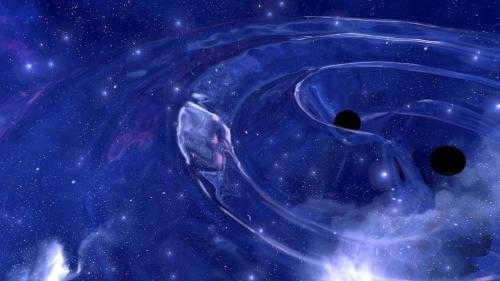
Astrophysicists have discovered that charged black holes have the potential to contain unique and extraordinary fractal objects, among other peculiarities. This challenges our current understanding of black holes.
Read the latest from “Hitech”
Exploring the Enigma of Black Holes
Black holes are enormous celestial objects that are nearly impossible to observe because they do not reflect light; rather, they actually absorb it. The gravitational force of black holes is so incredibly strong that even light rays cannot escape their pull and instead are drawn into the hole. This phenomenon causes the surrounding cosmic environment to appear distorted and unclear to observers. The image displayed above demonstrates this effect. Contrary to popular belief, black holes are not solid black spheres. Instead, they are transparent but create a dark shadow. In reality, they are not even true holes but rather spherical absorbers that trap anything within their gravitational field.
What is the size of black holes?
The size of a black hole can be visualized as a sphere, with its diameter being directly proportional to its mass. Consequently, as more mass is consumed by a black hole, its size increases.
In comparison to celestial bodies, black holes are minuscule due to the immense gravitational pressure that compresses their mass into extremely small volumes. For instance, a black hole with the mass equivalent to that of planet Earth would have a radius of only a few millimeters, which is 10,000,000,000,000 times smaller than the actual radius of our planet.
The term used to describe the radius of a black hole is the Schwarzschild radius, named after Karl Schwarzschild, who initially derived black holes as a solution to Einstein’s theory of general relativity.
Supermassive black holes are typically found at the core of galaxies. Due to their immense gravitational force, they are able to keep star systems at a significant distance, resulting in the formation of the galaxies we observe today.
Our own Milky Way galaxy is home to a supermassive black hole known as Sagittarius A*. This black hole is approximately 4.02 million times more massive than the Sun and has a radius of about 45 astronomical units (an astronomical unit being the average distance between the Earth and the Sun).
In addition to these supermassive black holes at the centers of galaxies, there are also “local” black holes that form when massive stars reach the end of their life cycles.
What lies within the depths of a black hole?
The true nature of a black hole remains a mystery. According to the principles of general relativity, a black hole contains a singularity, an area where tidal forces become infinitely powerful. Once an object crosses the event horizon, it is believed to be irretrievably drawn toward the singularity. However, the limitations of general relativity prevent it from accurately describing the inner workings of a black hole. To truly understand what transpires inside a black hole, we must turn to the theory of quantum gravity. This groundbreaking theory is expected to supplant the concept of a singularity with a different phenomenon altogether.
What is the reason behind the existence of universes within a black hole?
There are various theoretical possibilities for black holes – whether they possess an electric charge, if they are rotating or stationary, if they are surrounded by matter or are located in empty space. It is highly likely that some of these theoretical black holes actually exist in our own Universe. For instance, a commonly encountered type of black hole is one that is rotating and surrounded by falling matter.
However, there are also other types of black holes that remain purely hypothetical. These black holes can be described and understood solely through mathematical methods. One such example is an electrically charged black hole that is encompassed by antidesitter space. This particular space possesses a constant negative geometric curvature and has a shape that resembles that of a saddle.
There is no such space in the Universe, but its theoretical existence opens up many fascinating possibilities for exploration. One reason why it is worth investigating is that charged black holes share many similarities with the rotating black holes that exist in our universe.
In a recent study, the researchers discovered that when these black holes reach a relatively low temperature, they generate a “mist” of quantum fields around their surface. This mist is supported by the black hole’s gravity on the surface, but is pushed outward by the electric field. As a result, a superconducting medium forms within this mist. These black holes possess an internal event horizon in addition to the usual event horizon, allowing them to be penetrated without disintegrating into atoms.
Researchers have made a remarkable discovery regarding the innermost regions of a superconducting black hole. They have found that these regions could potentially be an expanding universe, where space can stretch and deform in various directions at different rates.
In addition to this, depending on the temperature of the black hole, certain areas of space within it could undergo a series of oscillations. These oscillations would lead to the creation of more expanding space, which would then initiate another set of oscillations. This process could continue infinitely, resulting in a fractal mini-universe that repeats itself with diminishing size.
For more information, check out:

The Universe is teeming with a myriad of enigmatic entities that contemporary science has only made incremental progress in comprehending. Among these are black holes, the most ancient and inscrutable entities in the cosmos.
A black hole is a region of space-time with an immensely powerful gravitational force that even objects moving at the speed of light are unable to escape from.
Its density and mass are so immense that light itself cannot break free from its clutches. The enigma of dark matter also arises from the fact that it cannot be directly observed through conventional means such as stars, planets, or other celestial bodies.
Black holes are not directly observable by humans, but can be detected through indirect signs and astrophysical calculations. Scientists gather information about these massive superobjects by studying their interactions with other bodies. For instance, when a star gets too close to a black hole, it gets absorbed until it vanishes completely.
The outer limits of a black hole are known as the event horizon. Once an object crosses this boundary, it can never escape the gravitational pull of the black hole.
The originator of the concept is uncertain, but it was initially introduced in a lecture given by J. A. Wheeler, an American theoretical physicist, in 1967. Prior to that, the terms “collapsars” or “frozen stars” were utilized to classify these enigmatic celestial objects. Meanwhile, the existence of such astrophysical entities had been in question for many years, and it was only in 2015 that their reality was confirmed through the detection of gravitational waves caused by the merger of two black holes. In 2019, the first photograph was captured of the silhouette of a black hole situated at the core of the Messier 87 galaxy, which is positioned 54 million light-years away from our planet.
Formation of Black Holes
There are four hypotheses in modern astrophysics regarding the creation of black holes:
- The collapse of a highly massive star;
- The collapse of the central region of a galaxy or protogalactic gas;
- Formation as a result of the Big Bang;
- The occurrence in high-energy nuclear reactions.
Collapse of a Highly Massive Star – A black hole is formed in this scenario when a massive star with a mass greater than three solar masses dies and loses its electric charge and magnetic field during the burning process. It collapses inward due to its own gravity, forming a black hole with a gravitational field so strong that it prevents even light from escaping.
At the end of its lifespan, any star of sufficient mass has the potential to transform into dark matter, with smaller and less massive objects unable to undergo such a transformation.
The collapse of the central region of a galaxy or a protogalactic gas region. According to this hypothesis, nearly every galaxy contains a black hole at its core, causing not just a single star, but an entire section of the galaxy to collapse under its own mass.
Formation as a result of the Big Bang. This theory suggests that primary black holes were formed during the early stages of the Universe as a result of the Big Bang.
Manifestation in high-energy nuclear reactions. These entities are referred to as quantum entities, and they have a relatively short lifespan. Such reactions can be conducted in laboratory settings. For instance, they are utilized in the examination of particles within hadron colliders.
Categories of black holes
Currently, there is awareness of four categories of black holes:
Stellar-mass – these are entities that originate from the gravitational compression or collapse of dying stars.
Primary black holes – refer to a hypothetical category of low-mass superobjects that emerged immediately after the occurrence of the Big Bang, under high temperatures and pressures.
These black holes can vary in size, as they are not formed through the collapse of stars. Their lifespan is approximately the same as that of the Universe, which is around 13 billion years. Therefore, if low-mass black holes did appear during the Big Bang, it is possible for them to still exist.
Cosmologists speculate that primary massive bodies weighing more than 1000 million tons could comprise dark matter. The only way to observe them is through their gravitational influence on visible matter or on the expansion process of the Universe.
Quantum black holes – are minuscule black holes that were created through nuclear reactions.
Signs of black holes
Due to the fact that black holes do not emit light, they cannot be directly observed. However, their existence can be inferred through indirect signs that indicate their presence. Some of the most prominent signs include:
- A dense cluster of stars orbiting a central point of gravity. The fact that these stars orbit around an empty space at the center of a galaxy strongly suggests the presence of a supermassive black hole.
- The absorption of matter from the surrounding space. When stars, interstellar dust, and other cosmic objects approach the gravitational pull of a black hole, they accelerate and emit X-ray radiation. Therefore, the observation of such radiation can indicate the presence of a black hole.
- The fusion of two black holes generates gravitational radiation that is 1000 times more powerful than the energy emitted by the Sun throughout its entire lifespan. This radiation can be detected using specialized gravitational-wave observatories.
The Count of Black Holes Discovered by Scientists
The exact number of existing black holes remains unknown, as scientists are still in the early stages of studying these enigmatic cosmic entities. Currently, approximately a dozen black holes have been identified in the center of our Galaxy, while the Milky Way is believed to contain hundreds of billions of massive stars that can potentially evolve into black holes as they reach the end of their lifecycle.
There are numerous celestial bodies that exhibit behavior similar to that of solitary black holes, exerting gravitational pull on matter and gas. However, according to scientific estimates, there are only around 10 known binary black hole systems.
The topic of black holes is incredibly fascinating, yet highly intricate. As you navigate through this subject, Phoenix.Help will provide you with the necessary support for your studies.
Black holes are the remnants of collapsed stars, dark regions of space that are isolated from the rest of the universe. Anything that enters a black hole becomes trapped and cannot escape. Even light is unable to escape, rendering black holes invisible even to the most powerful telescopes. However, physicists have evidence of the existence of black holes through the validation of established theories, as well as observations of the behavior of matter in close proximity to these cosmic entities.
Unsurprisingly, black holes have captured the imagination of science fiction. They have played significant roles in popular books, movies, and television shows, including iconic franchises like Star Trek and Doctor Who, as well as the 2014 blockbuster film Interstellar.
However, the depiction of black holes as highly menacing is not entirely accurate. According to Daryl Haggard, an astrophysicist at McGill University in Montreal, black holes do not actually have the power to suck objects in. Instead, they remain in a state of passivity, with objects being able to fall onto them, similar to how meteors can fall onto Earth. The black hole itself does not exert any attraction.
What is the process of black hole formation?
The formation of black holes is governed by the force of gravity, which controls the movement of planets, stars, and galaxies.
Stars emit light because of the nuclear fusion reactions occurring in their cores. These reactions generate an outward pressure that counteracts the inward pull of gravity, resulting in a stable star size. However, when a star exhausts its fuel and the external pressure diminishes, gravity causes the star to contract.
The subsequent events depend on the star’s mass. If the star is similar in mass to our Sun or slightly larger, it will collapse until it becomes a compact object roughly the size of Earth, known as a white dwarf. For stars that are much larger, the collapse leads to the formation of a highly dense object called a neutron star. In the case of a star that is exceptionally massive, the collapse cannot be halted, resulting in the creation of a black hole.
Why is it impossible for anything to escape from a black hole? The crucial factor is known as escape velocity: the velocity required to overcome the gravitational force of a specific star or planet and break free into outer space.
On Earth, the escape velocity is approximately 7.91 kilometers per second. If you were to throw a baseball into the air, it would eventually fall back down because its velocity is lower than Earth’s escape velocity. However, if you were able to throw the baseball at a speed exceeding 40,225 kilometers per hour, it would never return.
The escape velocity is highest for objects that have a large mass but are small in size. In the case of a black hole, the escape velocity exceeds the speed of light. Since nothing can travel faster than light (as demonstrated by Einstein’s theory of relativity), the star effectively vanishes. When light is unable to escape the surface of an object, that object appears black.
A black hole is defined by its event horizon, a hypothetical boundary that marks the area where the velocity required to escape is precisely equivalent to the speed of light.
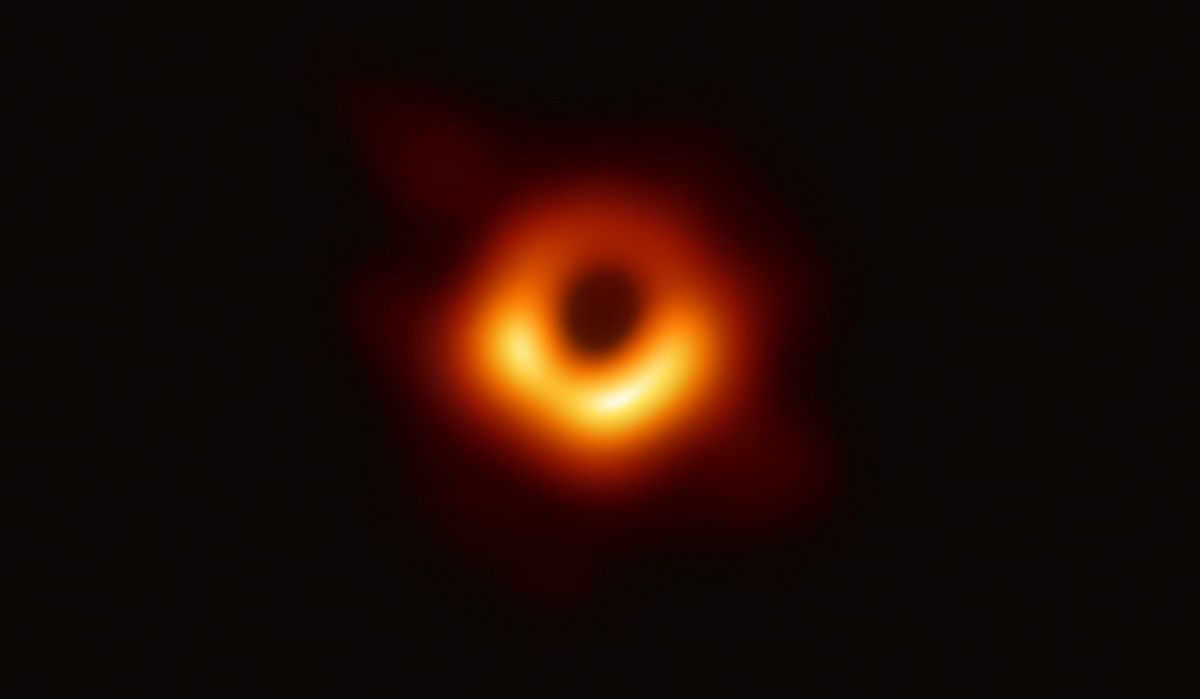
Black holes come in different sizes, ranging from a few suns (with a diameter of a few kilometers) to millions of solar masses (with a diameter of several million kilometers). The biggest of these supermassive black holes are believed to be located at the center of most galaxies, including our own Milky Way.
Scientists are still discussing the origins of these enormous black holes. One theory suggests that they form from the merging of star-sized black holes.
No one knows for certain what lies beyond the event horizon of a black hole. Some physicists speculate that the matter inside is compressed to such an extreme degree that it forms a singularity, a point of infinite density. In this perspective, a black hole can be seen as a region of empty space, with its mass concentrated at a minuscule point in the center.
If someone were unfortunate enough to fall into a black hole, they would experience the intense gravitational forces that would tear them apart, a phenomenon vividly described by Stephen Hawking as being stretched like spaghetti. Additionally, their mass would contribute to the overall mass of the black hole.
However, there are other physicists who challenge this understanding of the interior of a black hole. They propose that a more comprehensive physical theory, one that combines Einstein’s theory of gravity with quantum theory, could potentially eliminate the singularity altogether.
Black holes, despite their darkness, are not beyond our reach for study.
By observing the behavior of gas and dust that falls into black holes, astronomers have gained valuable insights into these enigmatic cosmic entities. The extreme temperatures of this material cause it to emit light across various wavelengths, offering a window into the workings of black holes.
The Event Horizon telescope, a network of radio telescopes spanning the globe, has provided astronomers with an unprecedented view of the region just beyond the event horizon of a black hole. Additionally, the motions of stars in the vicinity of Sagittarius A* (pronounced “Sagittarius A with a star”), the supermassive black hole at the center of the Milky Way, have been meticulously studied using the Very Large Telescope. These observations have allowed astronomers to infer certain properties of the black hole.
The detection of gravitational waves in 2015 has opened up a new avenue for studying black holes. Scientists can now investigate the collisions between black holes in deep space by analyzing the ripples in spacetime caused by these cataclysmic events.
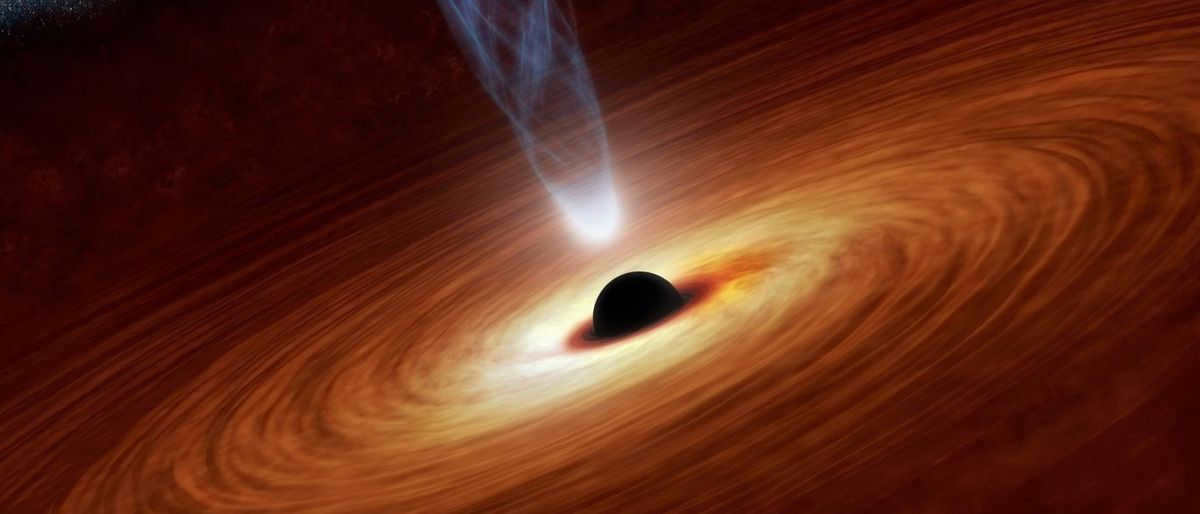
Contrary to popular belief, a black hole is not composed of empty spaces. Rather, it consists of an immense amount of matter tightly packed into a minuscule region. To put this into perspective, envision the entirety of Russia and its contents fitting snugly into your pocket. The gravitational force within your pocket would be so intense that it would attract everything in its vicinity.
A black hole is essentially a celestial body with an exceptionally powerful gravitational force, so much so that nothing in its proximity can escape its pull, not even photons. Photons, which encompass light waves, are elementary particles that succumb to the irresistible force of a black hole.
The fundamental principle of the theory of general relativity
The concept of a black hole becomes significant only within the context of the theory of general relativity. According to this theory, the presence of mass warps the fabric of space-time. The greater the mass of an object, the more pronounced the distortion of space-time becomes. For instance, the mass of the Sun causes a significant curvature in space-time. As a result, the Earth orbits around the Sun, seemingly under its gravitational pull. However, the explanation lies in the fact that the Earth follows the curvature of space-time induced by the mass of the Sun. Without this distortion, the Earth would move in a straight line into space.
A black hole possesses such an immense density that it creates an extremely deep gravitational well, which causes space-time to be torn apart. The resulting curvature is so intense that nothing can escape from this well.
What causes the formation of a black hole?
Formation of a black hole occurs when an object becomes so massive and compact that its escape velocity exceeds the speed of light. Escape velocity is the minimum velocity an object needs to escape the gravitational pull of a massive body. For instance, when launching a spacecraft to another planet, it is crucial to achieve a velocity higher than the escape velocity of Earth, which is 11.2 km/s. The escape velocities of other celestial bodies, such as the Moon (2.4 km/s) and the Sun (617.5 km/s), also vary depending on their mass.
Furthermore, the escape velocity required to overcome gravity differs depending on the distance from the center of the object. Escaping Earth’s gravity is easier when already at an altitude of 10,000 km compared to launching from the surface of the planet. This illustrates that the release velocity increases as the mass of the object increases.
As an illustration, let’s consider a hypothetical scenario where there exists a star of immense magnitude such that the magnitude of its escape velocity matches, or even surpasses, the speed of light (300,000 km/s). Consequently, any entity, including light itself, would be incapable of evading the gravitational pull exerted by this star.
While the above scenario is purely theoretical, it is now imperative to delve into the specifics of what circumstances could lead to the formation of a black hole. To accomplish this, it is crucial to examine the lifespan of a star.
The commencement of the existence of a celestial body that will ultimately form a singularity
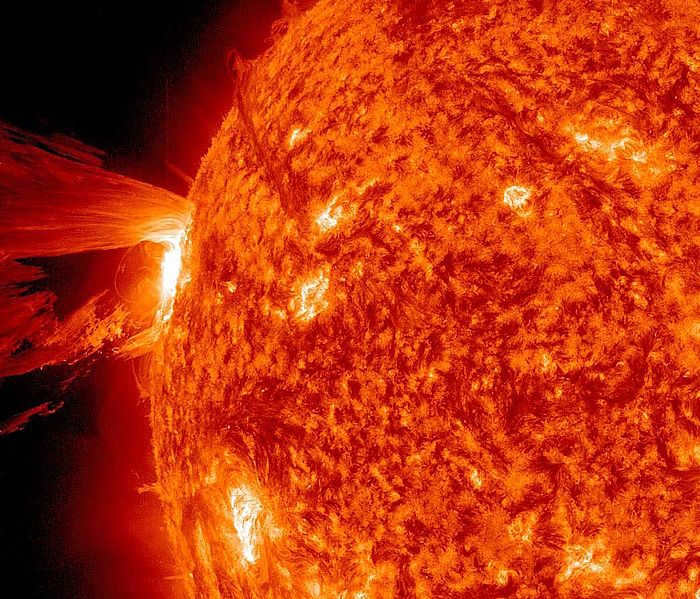
The conclusion of the life cycle of a celestial body that creates a singularity
Through the process of nuclear fusion, helium is generated and begins to gather in the core of the star, heightening the pull of gravity. Consequently, the star’s density increases, resulting in more vigorous nuclear reactions between hydrogen, helium, and other elements produced through nuclear fusion. This sequence of events is necessary in order to reestablish balance between the opposing forces at play. The fusion of hydrogen and helium within stars is responsible for the creation of all the other elements found in the periodic table through a series of successive fusion reactions!
However, there comes a point in the life cycle of a star when the increasing gravitational force can no longer be compensated for by nuclear fusion. As a result, the star’s core becomes compressed and the particles at the center of the star become highly compressed. These reactions occur in order to compensate for the lack of nuclear fusion, which was previously responsible for maintaining a balance between the gravitational force and the radiation pressure.
Once the pressure opposing gravity changes, it is no longer referred to as radiation pressure but rather degeneracy pressure. At this stage, the density of the star becomes incredibly high. The amount of weight that a single cubic centimeter of the core would contain is mind-boggling: 100 million tons!
If a star’s mass exceeds 3.2 times the mass of the Sun, the force of degeneracy can no longer counteract the pull of gravity. Consequently, the star will inevitably collapse inward, forming an extraordinarily compact singularity that encompasses the total mass of the core, thereby transforming into a black hole!
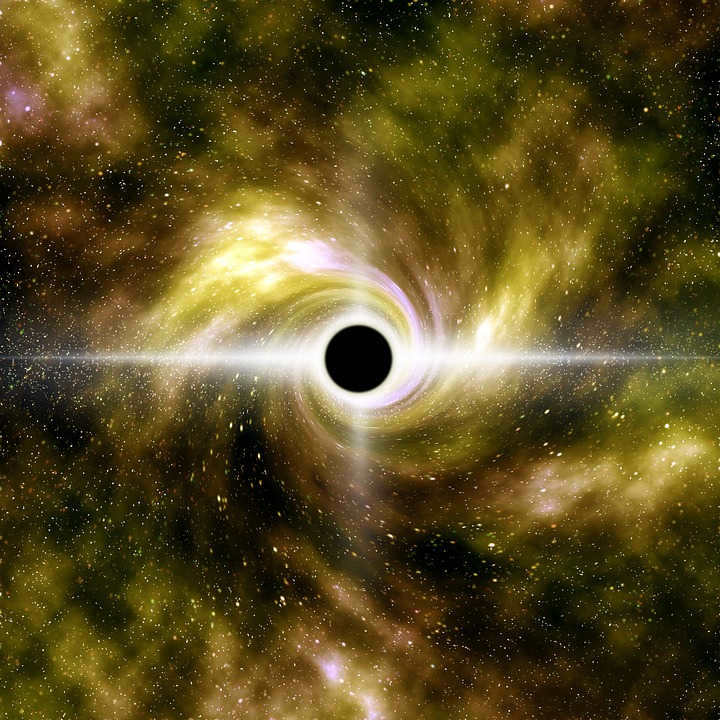
What happens when a black hole distorts space-time?
When space-time is distorted, it not only affects the shape of space (which is why the Earth orbits around the Sun), but also alters the flow of time. The theory of general relativity connects these two phenomena and states that the presence of mass causes time to slow down near an object.
Let’s consider two individuals, A and B. A is located far away from a massive object, while B is situated very close to it. A perceives B as moving in slow motion, whereas B experiences time passing at a normal rate.
Alternatively, the magnitude of a black hole’s mass results in an evident disparity in time between an individual positioned at the periphery of the black hole and a remote observer. Let’s envision, for instance, an individual who is nearing the black hole closely, while you assume the role of a spectator marveling at the spectacle. You will perceive that your companion appears nearly motionless, and the time and date displayed on their smartphone will experience negligible alteration over time – even after numerous years of observation. In contrast, the intrepid traveler will witness your aging and demise within the span of a single day. They may even feel a sense of sorrow upon witnessing the annihilation of the Sun and consequently our planet. Thus, time becomes subject to relativity as a result of the distortion of spacetime provoked by an immensely massive object.
Next: proving spacetime distortion with the help of general relativity in our GPS satellites
To ensure the accurate functioning of our GPS satellites, they utilize the principles of general relativity to accurately guide us.
According to general relativity, time slows down for objects in motion. Due to the satellite’s speed of 14,000 km/h, its clock lags behind ours by approximately 7 microseconds after a day of orbiting. Consequently, our GPS receiver experiences a delay of 7 microseconds when receiving signals from the satellite. If this delay were not accounted for, our GPS would indicate a location approximately two kilometers away from the actual position. In reality, the clock delay needs to be multiplied by the speed of light, which is the rate at which the satellite signals propagate.

